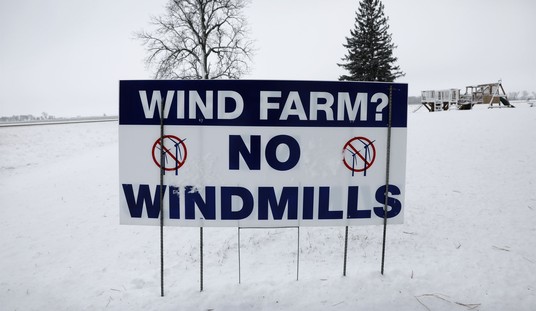Give the New York Times some credit in reporting the retreat of Social Security into red ink … but don’t give them too much credit. We’ve been writing about this for the last few years, and when we wrote about it, we presented the entire political backstory, including how Barack Obama’s OMB Director Peter Orszag predicted in 2008, while running the CBO, that this day would come — in 2019. We included mentions of how Harry Reid and other Democrats insisted in 2005 that George Bush was scaremongering when he attempted to reform SSA through partial, elective privatization, and how they assured us that Social Security was safe for decades without reform.
Does the Times mention any of this? Not exactly. In fact, the name “Orszag” doesn’t appear once, nor does the name “Reid.” Guess how many times the name “Greenspan” appears in this article by Mary Williams Walsh? Five:
The bursting of the real estate bubble and the ensuing recession have hurt jobs, home prices and now Social Security.
This year, the system will pay out more in benefits than it receives in payroll taxes, an important threshold it was not expected to cross until at least 2016, according to the Congressional Budget Office. …
Mr. Goss, the actuary, emphasized that even the $29 billion shortfall projected for this year was small, relative to the roughly $700 billion that would flow in and out of the system. The system, he added, has a balance of about $2.5 trillion that will take decades to deplete. Mr. Goss said that large cushion could start to grow again if the economy recovers briskly.
Indeed, the Congressional Budget Office’s projection shows the ravages of the recession easing in the next few years, with small surpluses reappearing briefly in 2014 and 2015.
After that, demographic forces are expected to overtake the fund, as more and more baby boomers leave the work force, stop paying into the program and start collecting their benefits. At that point, outlays will exceed revenue every year, no matter how well the economy performs.
Er, what $2.5 trillion balance? Al Gore (another name absent from this report) talked about a “lockbox” for Social Security assets, but they’re vaporware. It consists of Treasury IOUs that the US has to pay by selling more debt. The program has no hard cash of its own. As it falls into the red, benefits have to be paid through borrowing, whether the SSA does it directly or Treasury does it indirectly. Congress spends it all every year in order to cover its own deficits, or at least make those deficits look better than they would otherwise.
Forget those two years of black ink, too. That will only happen under the rosiest of scenarios for economic growth and employment. As the recession’s effects continue, people will continue retiring earlier or not going back to work. SSA’s revenues will continue to plateau before dropping steeply as the rest of the Baby Boomers leave the workforce and demand their benefits.
Some people predicted this day would arrive at about this time; those were the people Democrats accused of attempting to frighten seniors out of their benefits. Some predicted that this day wouldn’t come for almost a decade longer than it did and argued that reform wasn’t necessary in 2005, when it may have helped extend SSA’s life. Those are the people making the economic decisions in the White House now.
The country’s in the best of hands.








Join the conversation as a VIP Member